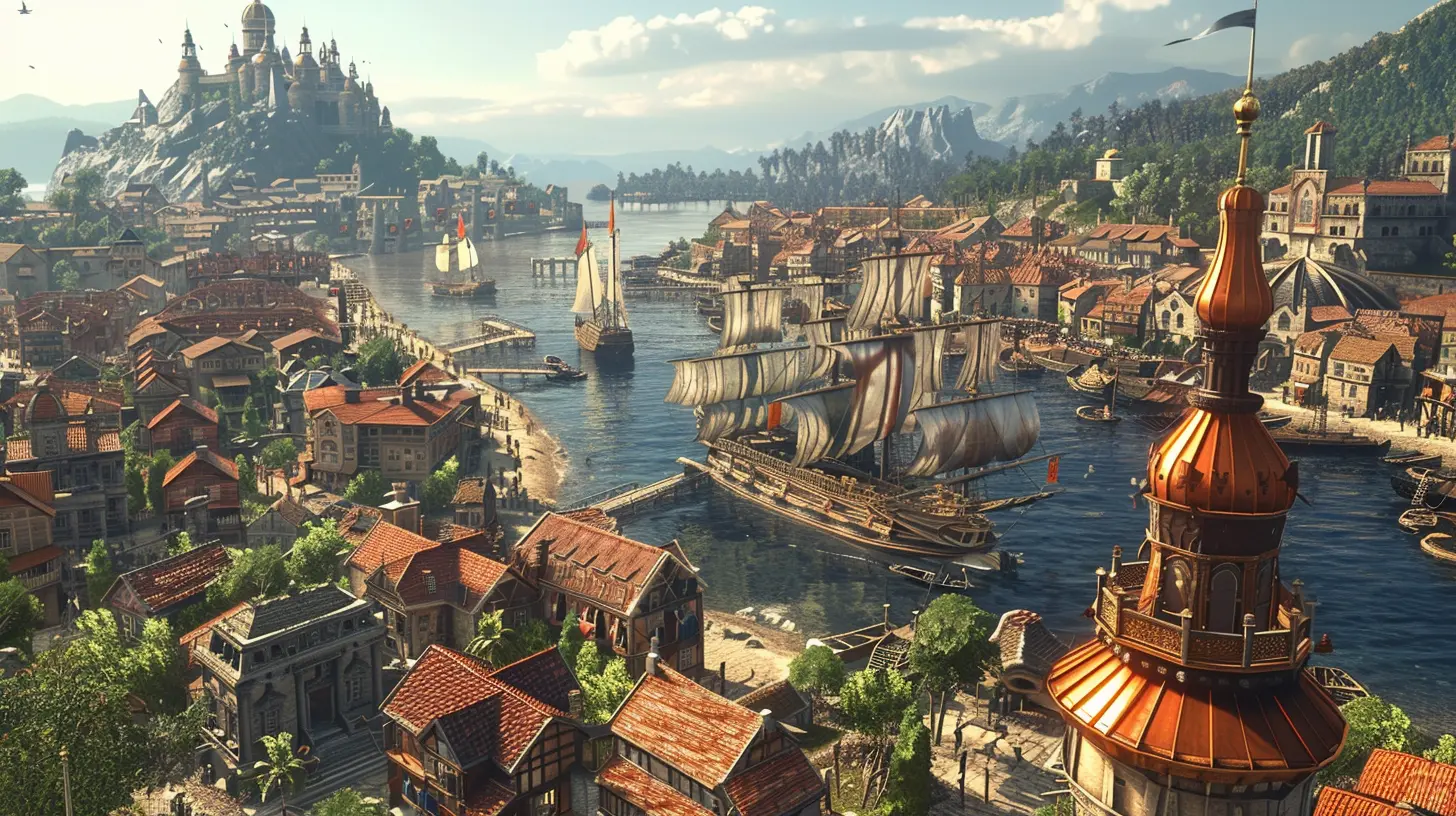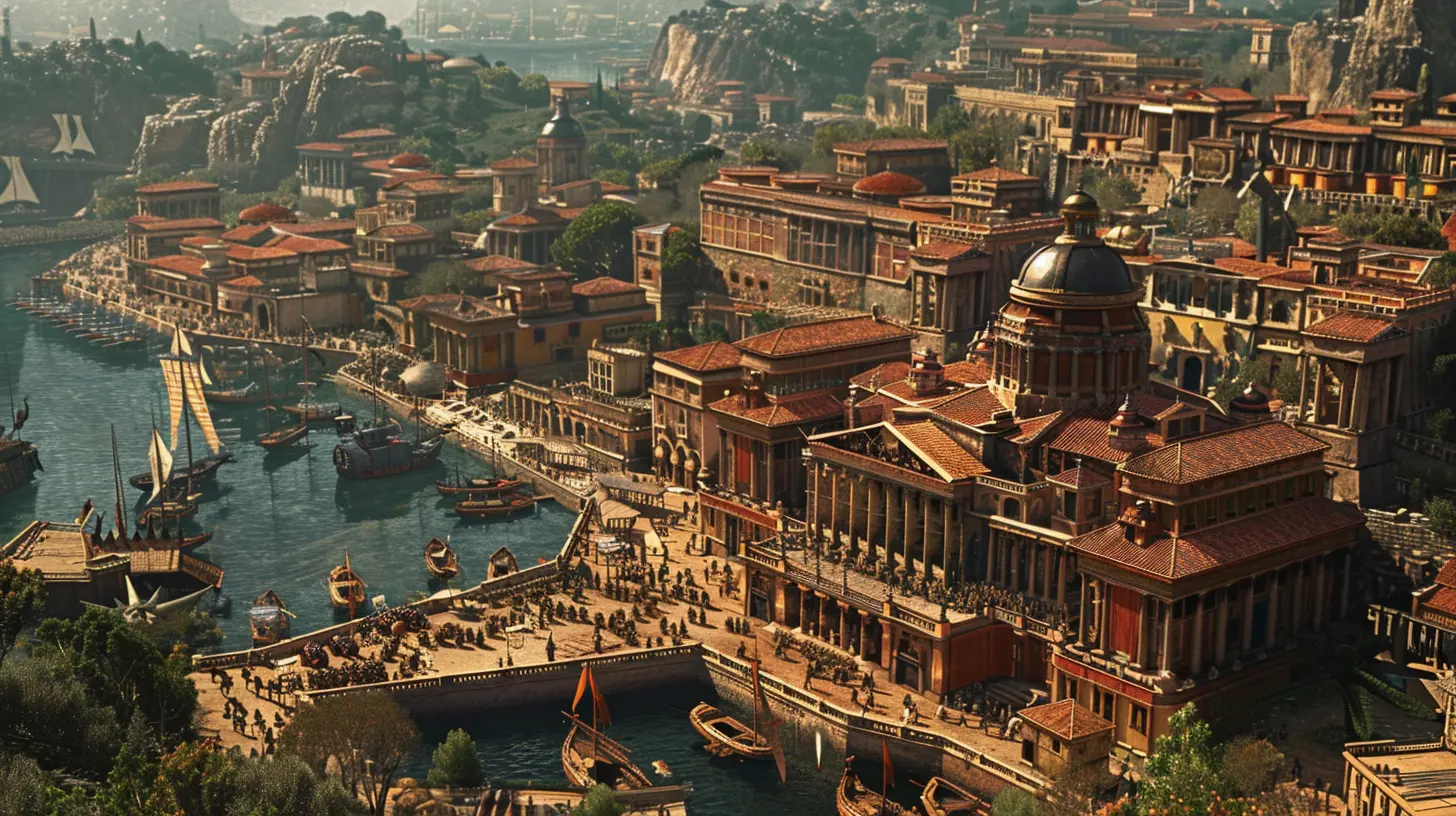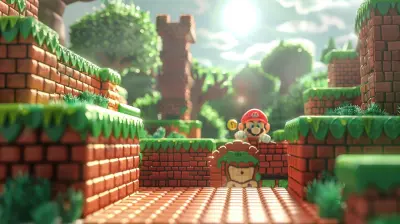Designing Historical Worlds: Tips for World Building in Period Games
26 June 2025
Let’s be real—nothing pulls a player into a game like a rich, believable world. But when that world is rooted in history? Now you’ve got something magical. Building a historical game world isn't just about slapping cobblestone streets and horse-drawn carriages into a map and calling it a day. Nope—it’s about capturing the real soul of that time and place, and wrapping your gameplay in a setting so immersive your players forget they’re in front of a screen.
If you’re diving into the world of period games, whether it's the Roman Empire, feudal Japan, medieval Europe, or the roaring twenties, stick around. We’re going deep into the art (and science) of historical world building—with tried-and-true tips to help you bring the past to life. Ready? Let’s jump into the time machine.
Why Historical World Building Is Totally Worth It
Before we get into the nuts and bolts, let’s talk about why historical settings are such a goldmine for game designers.First off, there’s built-in intrigue. History was messy, dramatic, and full of larger-than-life characters. That’s a recipe for juicy storytelling. Second, players want to slip into these worlds. Whether it's storming castles, surviving plagues, or navigating political court drama, historical games scratch a specific itch.
And finally? History gives you a framework. You don’t have to invent every tiny detail—just interpret it, tweak it, and make it fit your vision.
Tip #1: Choose the Right Time and Place (But Be Prepared to Commit)
There are literally thousands of historical eras you could choose from—so how do you pick?Ask yourself:
- What stories do I want to tell?
- What type of gameplay suits the era?
- What’s the emotional tone? Gritty? Grand? Tragic? Hopeful?
Once you settle on an era, go all in. Players will spot a half-baked world from a mile away. If you’re setting your game during the French Revolution, you better know your sans-culottes from your Jacobins.
And here's a tip within a tip: Don’t just pick the big names (like the Vikings or World War II). Sometimes the lesser-told stories—like the height of the Mali Empire or the Tang Dynasty—can be even more compelling because they're fresh territory.
Tip #2: Research Isn’t Optional—It’s Everything
You’ve probably heard this before, but we're gonna hammer it home: solid historical research is your lifeline. You can’t build a believable world without knowing the world you're building.Hit the books. Dive into documentaries. Lose yourself in museum websites and period letters (yes, really). And here’s the fun part—look beyond the battles and kings. Get into the everyday stuff. What did people eat? What were their superstitions? How did they punish criminals? How did gender roles work?
Find the flavor in the details, because that’s what brings your world to life.
💡 Pro Tip: Consider hiring a historical consultant if your game budget allows. Or at least get a history nerd on your team. They'll save you from cringe-worthy moments like giving 14th-century peasants potatoes (they didn’t hit Europe until way later).
Tip #3: Balance Accuracy with Playability
Now here’s where it gets tricky. Yes, historical accuracy matters—but not if it turns your game into a dusty textbook.You’ve got to strike a balance. Players want authenticity, but they also want to have fun. So, it’s okay to fudge a few dates or compress events—just be intentional about it. Decide what to keep real and what to tweak for gameplay flow.
Let’s say you're designing a game set in Edo-period Japan. Historically, weapons were super regulated—but in your stealth-based game, that might mean giving your ninja a little more flexibility than history allowed. That’s fine! Just make sure the world still feels authentic.
Give yourself grace. You’re not writing a dissertation—you’re crafting an experience.
Tip #4: Focus on the Senses
Want to transport players to 16th-century Istanbul or 1920s Harlem? Engage their senses.Ask yourself:
- What does the air smell like in a plague-ridden city?
- What’s the texture of ancient armor rubbing against someone’s skin?
- What does a tavern in a pirate port sound like?
Painting vivid sensory scenes can do more world-building than pages of exposition ever could. Use visual cues, sound design, ambient dialogue, and even music authentic to the time (hello, hurdy-gurdies and ragtime piano!).
And remember—your setting is a character, too. Treat it like one.
Tip #5: Create Meaningful Social Systems
Every historical period had its own class structures, taboos, and unwritten rules. Build that into your game mechanics.Maybe navigating noble courts requires reputation points. Maybe your character’s gender affects how they're treated. Maybe loyalty to a lord or guild limits your choices.
These systems shouldn't just be flavor—they should matter. Make them part of the challenge. Make them create tension. That’s what makes a period game feel lived-in rather than pasted together.
And hey, it’s not about glorifying the past—it’s about showing the complexities, and letting players find their path through it.
Tip #6: Don’t Shy Away from the Dark Stuff (But Do It Respectfully)
History isn’t always pretty. There were injustices, brutal wars, colonization, and deep societal divides. If you’re setting your game in a world like that, don’t sanitize it—and don’t ignore it either.But here’s the nuance: show the dark parts with care. Avoid turning real pain into edgy shock value. If your game touches on sensitive issues, think about the message you’re sending. Talk to people from those communities. Ask for feedback.
You don’t have to solve history’s sins, but treating them with honesty and empathy? That’s powerful storytelling.
Tip #7: Bring Local Flavor Into Your World
Even within a single time period, life varied wildly depending on where you were. A Roman citizen in Alexandria had a totally different world than one in Britannia.So, spice things up! Use regional dialects, customs, architecture, and even climate. Think about how geography affects your setting. What do people wear? What festivals do they celebrate? What kind of games did kids play?
If your whole "medieval game" just looks like England, you’re missing out on a buffet of world-building opportunities.
Tip #8: Let History Inspire Your Quests and Characters
One of the best things about historical games is how easily gameplay can tie into real events or people.Was there a real uprising in your chosen period? A controversial invention? A famous murderer? Build side quests or main plotlines around those events. Or better yet, introduce fictional characters who interact with those moments behind the scenes.
Make your player feel like they’re part of history, not just watching it happen.
Tip #9: Use Language to Set the Tone
Okay, don’t panic—you don’t need to write your game in Old English or Latin. But a little bit can go a long way.Incorporate key period phrases, sprinkle in idioms from the time, or use certain syntax patterns to create a believable tone for dialogue. And please, avoid slang that feels jarringly modern—unless your character is a time traveler, that is.
Want to be extra fancy? Create different dialects for different character classes or regions. A merchant from Venice should sound different from a blacksmith in Bavaria.
Tip #10: Leave Space for Player Imagination
This one’s big. As game designers (and storytellers), we sometimes want to control every detail. But here’s the twist: part of immersion comes from what isn’t stated.Let players fill in some blanks. Suggest that a character has a mysterious past. Hint at a forgotten war. Let abandoned buildings tell silent stories through their rubble and graffiti.
When a world feels bigger than what’s on screen, it feels alive.
Bonus Tip: Use Visuals Wisely
Let’s not forget the power of good visuals. Textures, lighting, architecture styles—all of it matters.Use real-world references. Study historical paintings and architecture. Look at how homes were decorated, or what weapons and armor actually looked like. And if you’re stylizing, do it with a purpose.
Stylized doesn’t mean inaccurate—it just means expressive.
Final Thoughts: Build With Heart, Not Just History
Designing historical worlds is a creative act. You’re not just rehashing the past—you’re reimagining it. You’re building a bridge between then and now. And when done well? You’re offering players a chance to walk in someone else’s shoes, in a time long gone, and feel something real.So, whether you’re crafting a sprawling RPG set in Ancient Egypt or a cozy sim game in Victorian London, remember: the best historical games aren’t just factually solid—they’re emotionally rich, layered, and full of life.
Go build a world worth getting lost in.
all images in this post were generated using AI tools
Category:
World BuildingAuthor:

Emery Larsen
Discussion
rate this article
2 comments
Miranda Horne
Absolutely loved this article! Designing historical worlds can be such a delightful challenge, blending creativity with research. Your tips on balancing authenticity with playability are spot on! Can’t wait to dive into my next project with these insights. Keep the great content coming!
September 15, 2025 at 4:03 PM

Emery Larsen
Thank you so much for your kind words! I'm thrilled you found the tips helpful. Happy world building!
Phoenix Mason
Great insights! Crafting authentic historical worlds enriches gameplay and immerses players. Excited to see how these tips inspire future game designs!
July 2, 2025 at 5:00 AM

Emery Larsen
Thank you! I'm glad you found the insights valuable. I can’t wait to see how these ideas inspire future game designs as well!


